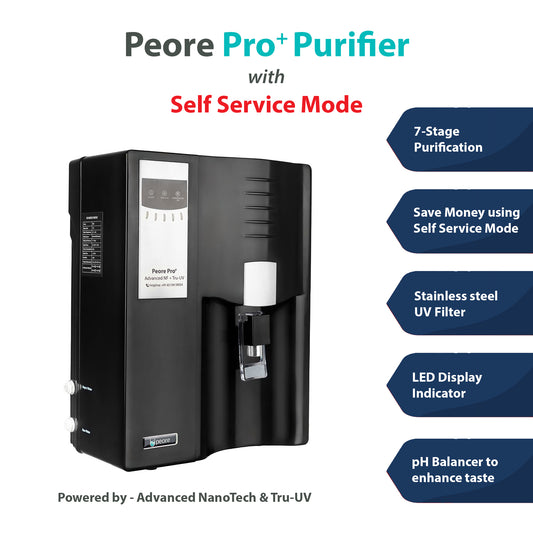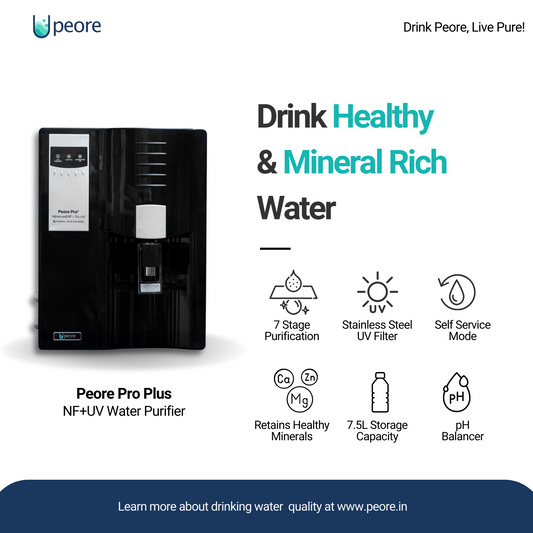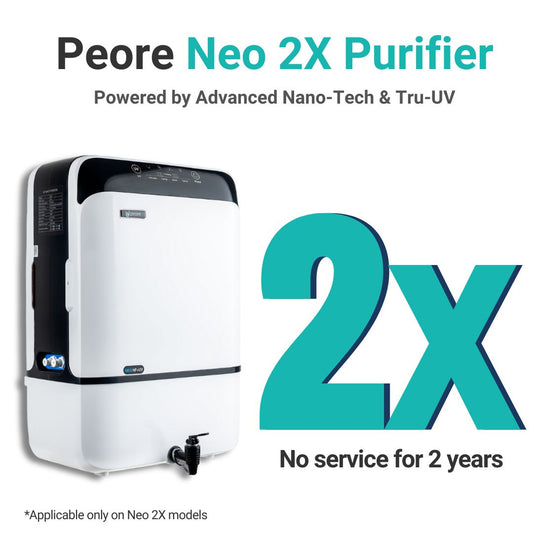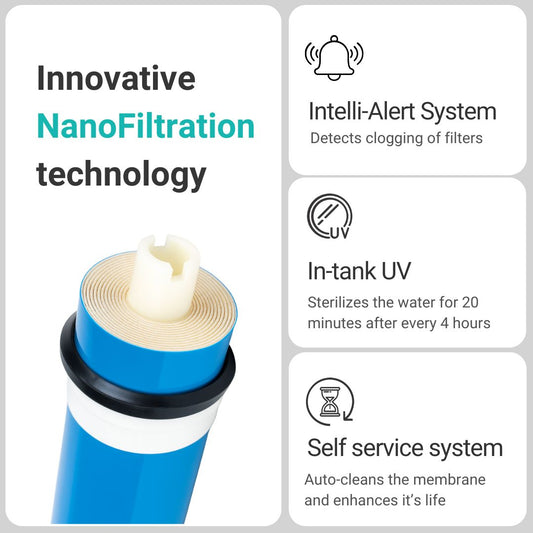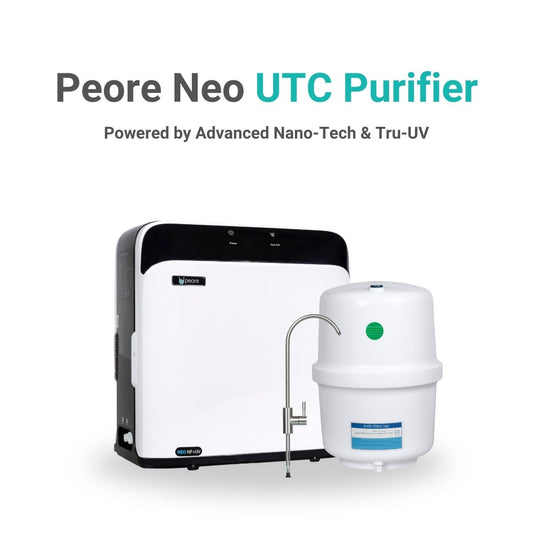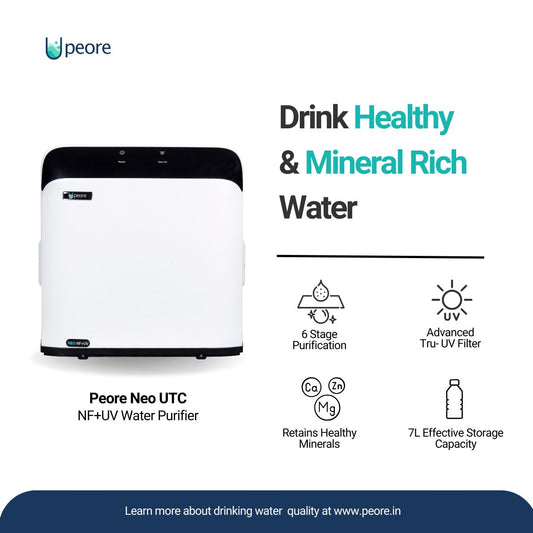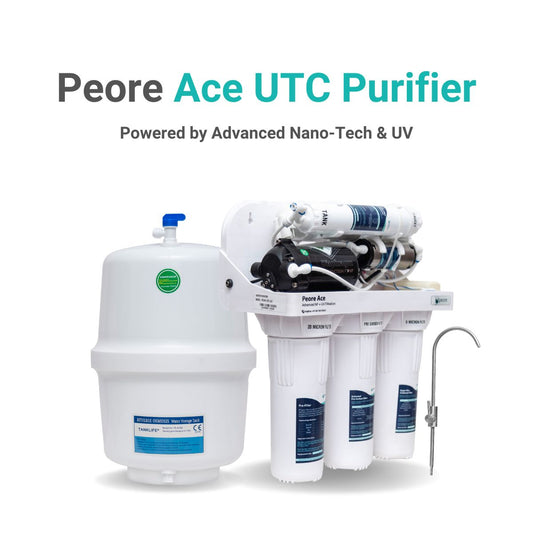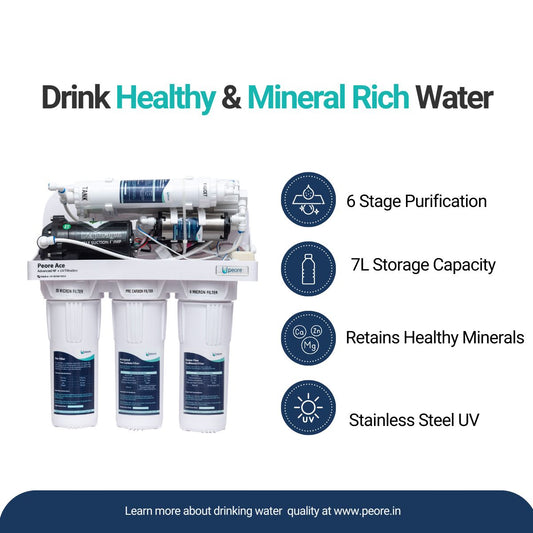If you think RO is the only way to get clean drinking water—you're not alone. But here's the thing: RO isn't always the right choice for every home. In fact, for many households in India, especially those using municipal or moderately hard water, a water purifier without RO can be a smarter, healthier, and more cost-effective option.
Let’s break it down—what your water actually needs, and the non-RO purifiers that can get the job done without overdoing it.
RO vs. Non-RO: What Does Your Water Actually Need?
While RO (Reverse Osmosis) purifiers are well-known, they’re not suitable for every home. If your water has a TDS (Total Dissolved Solids) level below 1500 ppm, a water purifier without RO is often a better, healthier, and more sustainable option.
In fact, if your water doesn’t have very high TDS, an RO purifier could be:
- Wasting water unnecessarily
- Stripping essential minerals from your drinking water
- And costing you more in maintenance than needed
So, what are the other options? And more importantly—how do you know which one is right for you?
💧 But first, Understand Your Water TDS
TDS tells you how many dissolved salts and minerals are in your water. Here’s a quick guide:
- TDS below 150 ppm → Very soft water
- TDS 150–500 ppm → Ideal for drinking
- TDS 500–1500 ppm → Needs purification
- TDS above 1500 ppm → RO purifier is required
👉 Not sure about your water quality? Use a TDS meter to test it yourself. Buy one here →
If your water’s TDS is below 1500 ppm, you don’t need RO. Instead, there are smarter, more efficient options available. Let’s explore the types of water purifiers without RO—and help you find the one that fits your home best.
1. Gravity-Based Water Purifiers
Best for: Municipal or soft water (TDS below 150 ppm)
Technology: Sediment + Activated Carbon (non-electric)
If you're looking for a simple water purifier without RO, gravity filters are your starting point. These use gravity to pull water through layers of activated carbon and sediment filters—removing visible particles, chlorine, and some bacteria.
✅ Pros:
- No electricity needed
- Very low cost
- Ideal for temporary or rural setups
❌ Cons:
- Doesn’t remove viruses or dissolved salts
- Not suitable for hard or borewell water
💡 Perfect if you’re on a tight budget and get clean municipal water.
2. UV Water Purifiers (Ultraviolet)
Best for: Municipal water with low to moderate contamination (TDS below 150 ppm)
Technology: UV lamp for disinfection
UV purifiers are a popular choice when you want the best water purifier without RO for disinfecting water without altering its mineral content. The UV lamp kills bacteria and viruses, making the water microbiologically safe.
✅ Pros:
- Kills 99.99% of germs
- Doesn’t remove essential minerals
- Compact and easy to maintain
❌ Cons:
- Doesn’t remove dissolved salts or chemicals
- Requires electricity
💡 A great option for urban homes with treated water supply.
3. UF (Ultrafiltration) Water Purifiers
Best for: Low TDS water with visible impurities (TDS below 150 ppm)
Technology: Hollow fiber membrane filtration
UF purifiers physically remove bacteria, cysts, and sediments through a fine membrane—without needing electricity. While it’s not as aggressive as RO, it’s a great solution if you’re seeking a water filter without RO for soft water.
✅ Pros:
- Works without electricity
- Retains essential minerals
- Removes bacteria and sediments
❌ Cons:
- Doesn’t remove viruses or dissolved impurities
💡 Works best when combined with UV for added safety.
4. UV + UF Water Purifiers
Best for: Low to moderate (TDS below 150 ppm)
Technology: Dual stage—UV disinfection + UF filtration
A UV + UF purifier offers the best of both worlds: UV kills viruses and bacteria, and UF clears out sediments and pathogens. If you want a best water purifier for home without RO, this combination is reliable, compact, and efficient.
✅ Pros:
- Complete protection from bacteria, viruses, and dirt
- No water wastage
- Affordable maintenance
❌ Cons:
- Not suitable for high TDS or borewell water
💡 Ideal for city homes that rely on municipal water supply.
5. NF + UV Water Purifiers (Best Overall Option)
Best for: Borewell, tanker, or mixed sources with TDS up to 1500 ppm
Technology: Nanofiltration membrane + UV disinfection
If you're looking for the best water purifier without RO that offers deep purification and still retains essential minerals, Nanofiltration (NF) + UV is the gold standard.
Unlike RO, NF doesn’t strip your water of minerals like calcium, potassium, magnesium etc—minerals that are vital for your bones and overall health. It also wastes 3X less water and costs less to maintain annually.
✅ Pros:
- Removes heavy metals, viruses, bacteria
- Retains good minerals
- Low water wastage (0.5–2L per liter purified)
- Lower AMC cost (~₹2000–₹2500)
- Adds an extra layer of safety with UV
❌ Cons:
- Not suitable for very high TDS (>1500 ppm)
- Still wastes some amount of water
💡 The most balanced, long-term solution for Indian homes. A smart option that checks all the boxes.
| Purifier Type | Best For | Removes | Needs Electricity | Water Wastage |
|---|---|---|---|---|
| Gravity Filter | Soft municipal water | Sediments, some bacteria | ❌ | ❌ |
| UV | Treated water with low TDS | Bacteria, viruses | ✅ | ❌ |
| UF | Low TDS with visible impurities | Dirt, bacteria, cysts | ❌ | ❌ |
| UV + UF | Low to moderate TDS | Microbes + sediments | ✅ | ❌ |
| NF + UV | TDS < 1500 ppm | Heavy metals, microbes | ✅ | ✅ (Minimal) |
Comparison Table: Best Water Purifiers Without RO
So, What’s the Best Water Purifier Without RO?
If your TDS is below 1500 ppm, you likely don’t need an RO purifier—and skipping it comes with real benefits:
- Save water – Avoid the 3–4 liters wasted per liter with RO
- Retain essential minerals – Keep calcium and magnesium in your drinking water
- Lower electricity usage – Non-RO purifiers are more energy-efficient
- Cut down on maintenance costs – Fewer filters, fewer headaches
Our Recommendation:
Not every home needs an RO purifier—and in many cases, it’s simply not the right fit. The type of water purifier you choose should depend entirely on your water source and TDS level.
-
If you're using municipal water or water with low to moderate TDS, there are better, more mineral-friendly options like UV, UF, or NF-based purifiers.
-
For homes with borewell or tanker water under 1500 ppm, a Nanofiltration (NF) + UV purifier offers a solid balance—it filters out harmful contaminants while retaining essential minerals your body needs.
That said, there’s no one-size-fits-all. Start by checking your water’s TDS, understand your local water quality, and then choose a system that meets your needs without overdoing it.
👉 Need more help choosing the right purifier? Check out our detailed guide on how to choose the best water purifier →


